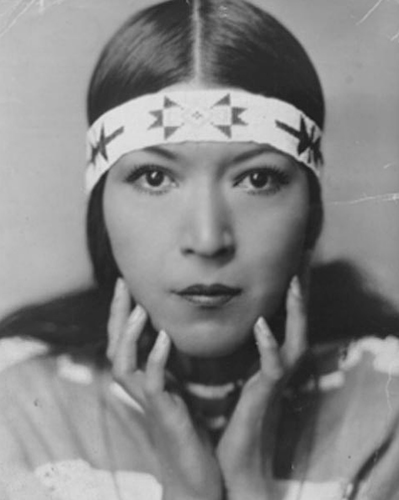May 19, 1930: “The Silent Enemy,” a silent movie, gets its premiere at the Criterion Theater in New York with Indian Island, Maine, native Mary Nelson Archambaud (1903-1977) in one of the key roles.

The film wins critics’ praise but is a box office failure, probably because in an era when the industry is in transition from silent movies to “talkies,” moviegoers quickly are gravitating toward movies with sound. Nonetheless, the experience creates opportunities for Archambaud.
Better known as Molly Spotted Elk, Archambaud, a writer, chorus line dancer, and performer of traditional Native American dances, entertains audiences in the United States and Europe. Her wide-ranging experience includes studying journalism and anthropology at the University of Pennsylvania, starring in a documentary drama about Ojibway Indian life, dancing topless in New York and lecturing at the Sorbonne in Paris.
“She had an anthropologist’s eye and in her travels frequently recorded culturally based values, habits, and tastes that were different from her own,” biographer Bunny McBride writes.
While living in France, Archambaud marries a French journalist. She and her 6-year-old daughter flee the 1940 Nazi invasion, escaping on foot over the Pyrenees mountains along the border with Spain. She returns to Indian Island and learns a year later that her husband has died in a French hospital.
Apart from a year in a mental institution, she spends the rest of her life living either in New York or on Indian Island.
May 19, 1946: Booth Tarkington, novelist and longtime Maine summer resident, dies at 76 in Indianapolis. Tarkington wrote much about Maine characters and places.

Atwater Kent, Booth Tarkington and Kenneth M. Roberts walking in Kennebunkport in August 1925. Image courtesy of the Library of Congress
In 1903 Tarkington contracted scarlet fever, and a doctor recommended that he go from his native Indiana to Kennebunkport, Maine, to recuperate. It changed his life. Eventually, he spent the warmer months there annually.
He wrote most of his more than 30 novels after the age of 50. The best known include “Alice Adams,” “The Magnificent Ambersons” and the children’s book “Penrod.” He became close friends with Kennebunkport neighbor Kenneth Roberts, a historical novelist who dedicated three of his novels to Tarkington.
Tarkington’s own novels were blockbuster successes. He won the Pulitzer Prize twice and numerous other honors, including being listed in 1992 on The New York Times’ list of the 12 greatest contemporary American men.
His current reputation is much diminished, however, as is demonstrated by a recent New Yorker critique by Robert Gottlieb, subtitled “How a candidate for the Great American Novelist dwindled into America’s most distinguished hack,” which derides Tarkington’s formulaic writing style and chronicles his posthumous decline into relative obscurity.
Whatever his failings, Tarkington was a workhorse, even when eye operations robbed him of his sight for five months. “(E)ven the calamity of blindness,” Gottlieb wrote, “did not keep him from writing – the only thing he not only knew how to do but needed to do.”
Tarkington hired a secretary to read him his correspondence and take copious dictation until his eyesight returned.
Joseph Owen is an author, retired newspaper editor and board member of the Kennebec Historical Society. Owen’s book, “This Day in Maine,” can be ordered at islandportpress.com. He can be contacted at: jowen@mainetoday.com.
Send questions/comments to the editors.


